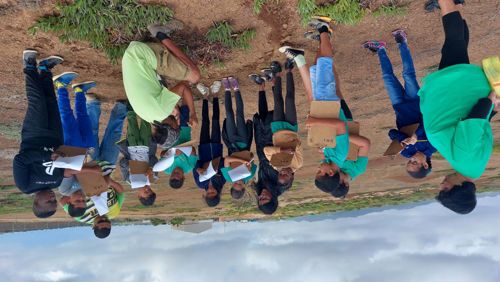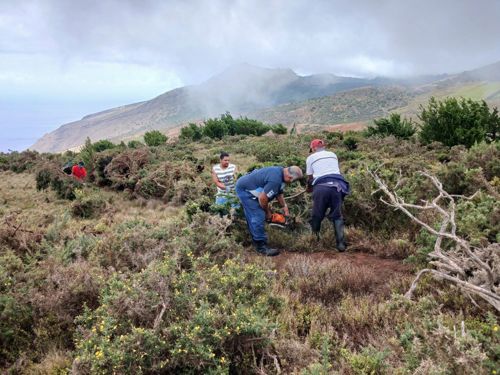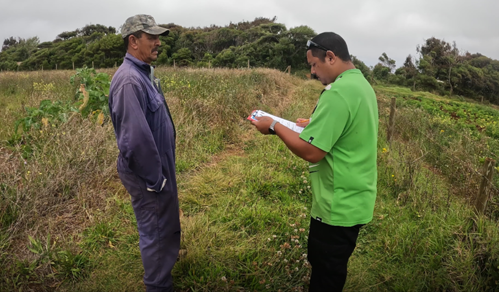Biodiversity conservation and climate resilience

Wirebird. Credit - Gavin Ellick.
Integrating biodiversity conservation and climate resilience
This project not only contributes to the conservation of St Helena’s endemic land bird — the St Helena Plover (locally known as the Wirebird) — but also enhances climate resilience and fosters community development through innovative livelihood initiatives. By actively engaging local farmers and using traditional local knowledge, the project has achieved significant outcomes. Let’s delve into how DPLUS190 has made a positive impact:
1. Engaging farming syndicates
Recognising the critical role of local farming syndicates, the project actively involves them. Rather than confining efforts to project-specific trial sites, the project team collaborates with syndicate members in wider farming activities, such as broader land clearance, fence repair, and sheep sorting activities at locations like Deadwood and Man and Horse. This mutual-aid approach strengthens community relationships and ensures that the project’s benefits extend beyond its working lifespan. It addresses common feedback from the farming community that they would like to see more conservationists on the ground more often.

2. Reaching the wider community
To maximise impact, the project extends its reach beyond the syndicates directly involved in trial sites. The Chamber of Commerce, which also functions as a farmers’ association, plays a crucial role. By connecting with farmers who are not part of the syndicates, the project fosters a sense of collective responsibility. These broader engagements contribute to the creation of a more resilient and interconnected community.
To engage with those that aren’t farmers but may have important knowledge and feedback, the team also makes an effort to attend high traffic areas in remote communities in person. This also enables communication with those that may not be able to actively engage with the project, by taking the project to them.

3. Tapping into traditional knowledge
Local farmers’ feedback provides valuable insights into historical land management practices. By learning from traditional practices, the project gains a deeper understanding of sustainable techniques. Notable examples include:
- Mixed grazing species: historically, donkeys and cattle occupied the same areas. The project now advocates for mixed-species grazing practices, benefiting both livestock and the ecosystem.
- Fodder planting: enhancing boundaries by planting fodder ensures supplementary feeding for livestock during challenging seasons.
4. Equitable access to the project
- In order to collect surveys from farmers, the project team interviews each one individually, so that the data is not biased by the ability of any farmers to read or write, and everyone is equitably able to share their views.
- The project hosts local school groups regularly to give the younger members of the community access to the Wirebird and nature.
Denis Leo, Senior Project Officer, emphasises the impact of these efforts on the project:
“Creating new habitats benefits the increasing Wirebird population, and working closely with the farming community, highlights the need for more sustainable land-clearing methods. It also underscores the necessity of updating land use policies to incorporate these methods.”
 Nico Interviewing Mark Coleman. Credit - Gavin Ellick.
Nico Interviewing Mark Coleman. Credit - Gavin Ellick.
Overcoming challenges
This project encountered obstacles along the way but found effective solutions:
- Communication: regular dialogues with farmers addressed concerns and allowed for adaptive strategies.
- Balancing conservation and livelihoods: thoughtful planning ensured a balance between conservation goals and livelihood needs.
- Respecting local wisdom: incorporating traditional knowledge led to better project outcomes.
This project, titled ‘Improving St Helena’s grasslands to benefit people and wildlife’, is hoping to demonstrate and influence how integrating biodiversity conservation, climate resilience, and local knowledge can lead to a sustainable future for the island.
For more information on this Darwin Plus Main project DPLUS190, led by St Helena National Trust, please click here.

 Back
Back